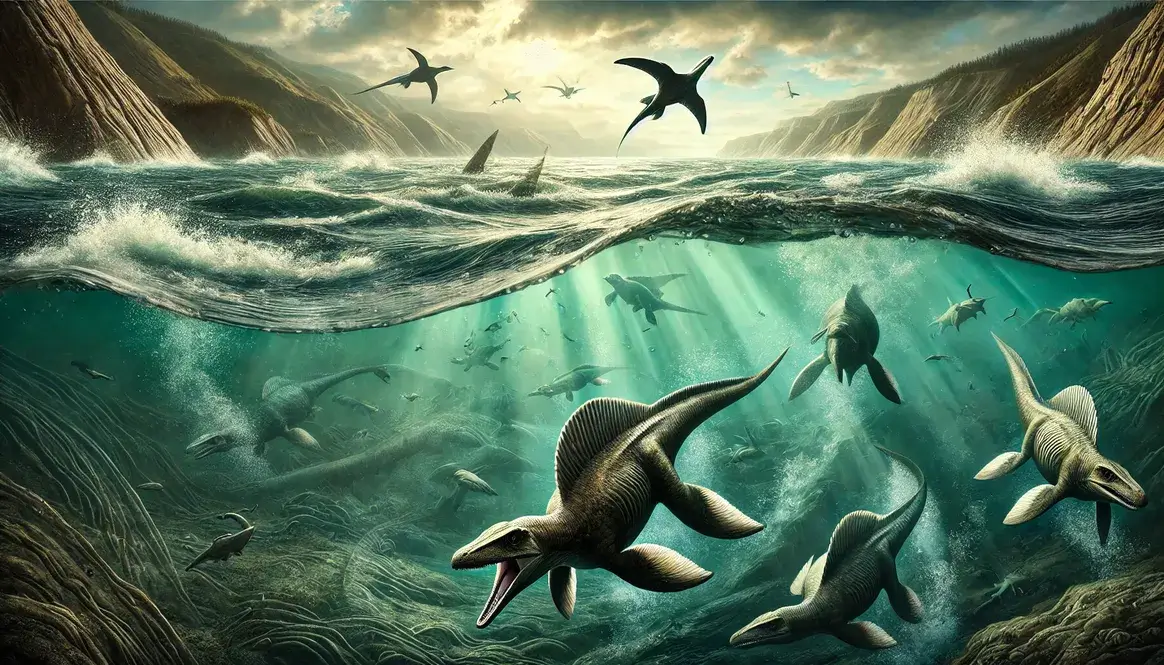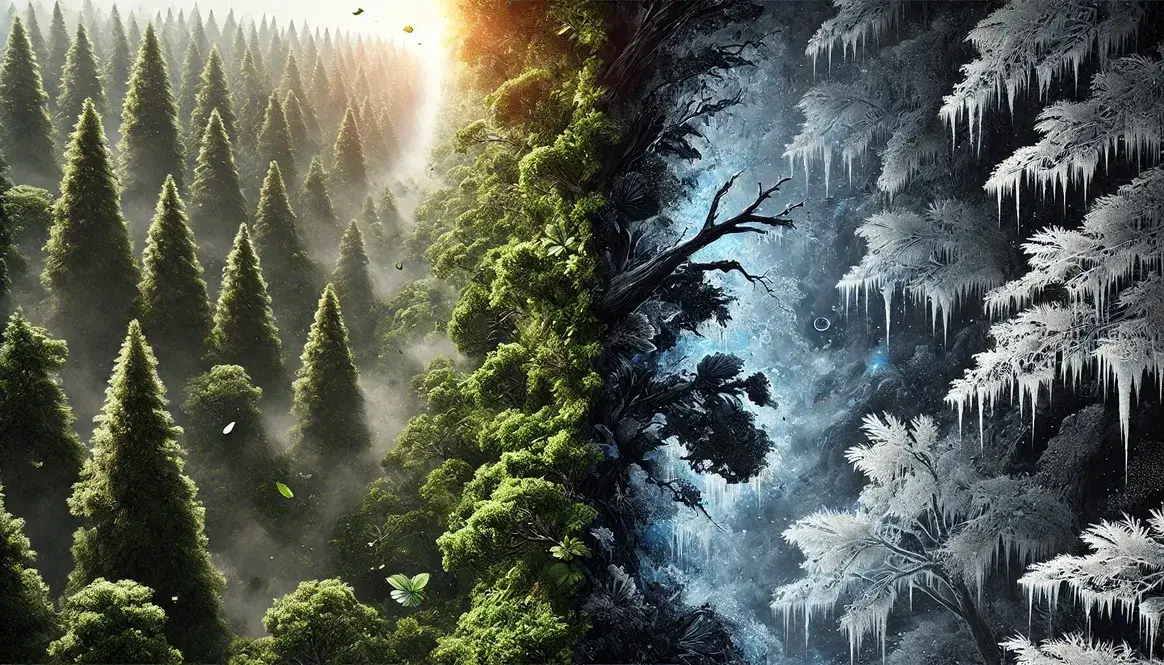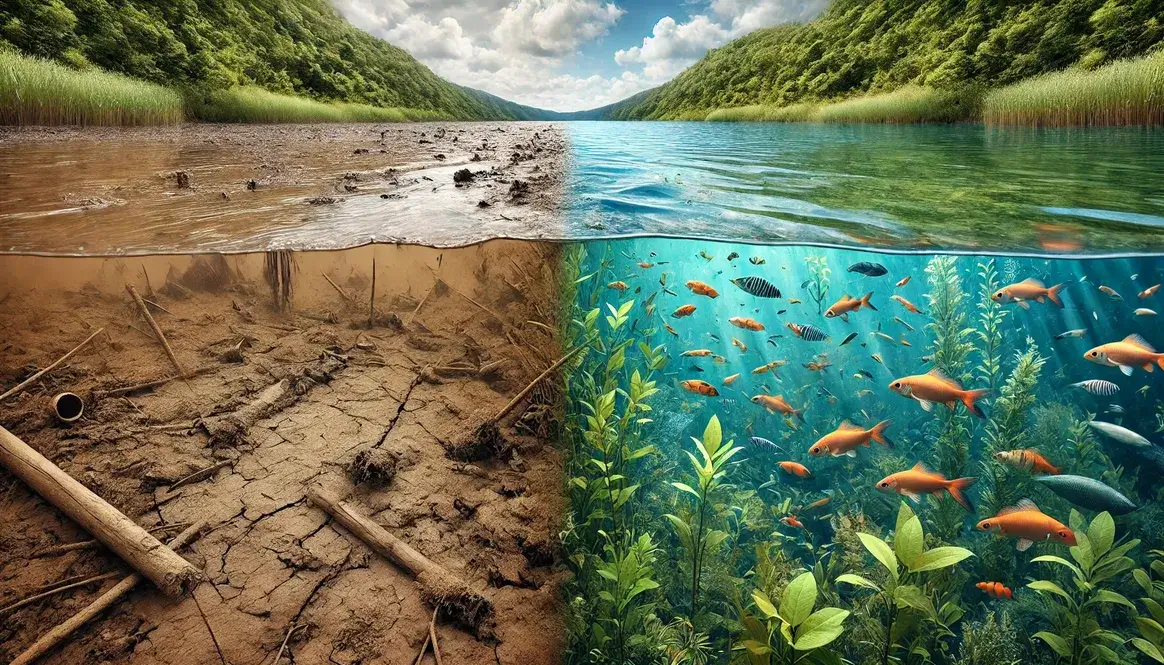The Cretaceous period lasted from about 145 to 66 million years ago. It was a time of great change for our planet. The world was warmer than it is now, with no polar ice caps. Dinosaurs roamed the land, while strange creatures swam in the seas.
During this time, the map of Earth looked quite different. The continents were still moving apart after the breakup of the supercontinent Pangaea. This shifting of landmasses had a big impact on how oceans moved in the Cretaceous. New waterways opened up, changing the flow of ocean currents.
| Key Aspects of Cretaceous Ocean Movement | Description |
|---|---|
| Major Currents | Strong equatorial currents, developing circum-global systems |
| Continental Impact | Breakup of Pangaea created new seaways and altered circulation |
| Sea Level Influence | Rising seas flooded continents, forming shallow seas |
| Climate Effects | Ocean movements distributed heat, affecting global temperatures |
| Marine Life Impact | Currents shaped distribution and evolution of sea creatures |
How did oceans move in the Cretaceous: An overview
Ocean currents in the Cretaceous were both similar and different to those we see today. The basic patterns were there, but with some important changes.
One of the biggest differences was the presence of strong equatorial currents. These currents moved water from east to west around the globe, much stronger than what we see now. This had a big effect on how heat was distributed around the planet.
Another key feature was the development of circum-global current systems. These were large-scale movements of water that flowed around entire continents. As the Cretaceous progressed, these systems became more like the ocean currents we see today.
But to really understand how oceans moved in the Cretaceous, we need to look at how things changed over time. The ocean currents at the start of the Cretaceous were quite different from those at the end. Let’s explore this journey through time in the next sections.
Early Cretaceous ocean circulation (145-100 million years ago)
The Early Cretaceous was a time of big changes for Earth’s oceans. As continents shifted and new waterways opened up, the way oceans moved began to transform. Let’s explore how these changes affected ocean currents during this exciting time.
The breakup of Pangaea and its effects on ocean currents
Imagine a giant jigsaw puzzle slowly coming apart. That’s what was happening to the supercontinent Pangaea during the Early Cretaceous. As the continents drifted apart, new spaces opened up between them. These spaces filled with water, creating new seaways.
One of the most important new seaways was the gap that started to form between North and South America. This allowed water to flow between the Pacific and Atlantic Oceans for the first time in millions of years. Another key change was the widening of the space between Africa and South America, which would eventually become the South Atlantic Ocean.
These new waterways had a big impact on how oceans moved in the Cretaceous. They allowed water to flow in new directions, changing the patterns of ocean currents. As continents drifted, they also changed the shape of ocean basins, which affected how water moved within them.
Major ocean currents in the Early Cretaceous
During the Early Cretaceous, ocean currents were starting to take on patterns that would eventually lead to our modern ocean circulation. Here are some of the key features:
- Strong equatorial currents: These flowed from east to west around the globe, much stronger than today’s equatorial currents.
- Developing gyre systems: Large circular current systems, called gyres, were beginning to form in the major ocean basins.
- Limited north-south circulation: The flow of water between the equator and the poles was more restricted than it is today.
These ocean movements had a big influence on the Cretaceous period climate. The strong equatorial currents helped to distribute heat around the planet, contributing to the warm temperatures of the time. This warmth allowed creatures like dinosaurs to thrive, even in areas that would be too cold for reptiles today.
Ocean currents also played a crucial role in shaping marine ecosystems. They transported nutrients and small organisms across vast distances, influencing where different types of sea life could survive and thrive. The patterns of ocean circulation helped determine where marine reptiles like plesiosaurs could find food, and where various types of prehistoric fish lived.
As we move forward in time, we’ll see how these early patterns of ocean movement continued to evolve, shaping the world of the Cretaceous in fascinating ways.
Mid-Cretaceous ocean movements (100-80 million years ago)
As we journey into the Mid-Cretaceous, we find a world where ocean movements were changing dramatically. This period saw significant shifts in how water flowed around the globe, with far-reaching effects on climate and life.
The impact of rising sea levels on ocean circulation
One of the most striking features of the Mid-Cretaceous was the dramatic rise in sea levels. Cretaceous sea levels were much higher than they are today, and this had a profound impact on ocean circulation.
As sea levels rose, they flooded large areas of the continents. This created vast shallow seas in many parts of the world. Here’s what happened:
- Flooding of continental areas:
- Low-lying lands disappeared under the rising waters
- Coastlines moved far inland
- Entire continents were split by seaways
- Creation of new shallow seas:
- Large areas of North America were covered by a shallow sea
- Europe became a group of islands
- Parts of Africa and South America were submerged
These new shallow seas had a big effect on ocean currents. They allowed water to flow in new patterns, changing how heat and nutrients were distributed around the planet. The shallow seas also provided new habitats for marine life, leading to an explosion of diversity in sea creatures.
Intensification of equatorial currents
As the Mid-Cretaceous progressed, another important change was taking place in the oceans: the equatorial currents were getting stronger.
The east-west circulation of water near the equator became more intense. This was partly due to the Earth’s rotation and the shape of the ocean basins. The strengthening currents had several important consequences:
- They moved more warm water from the equator towards the poles
- This helped to keep the Earth’s climate warm, even at high latitudes
- It allowed heat-loving creatures to live in areas that would be too cold for them today
The intensified equatorial currents also affected the distribution of nutrients in the oceans. This had a big impact on where different types of marine life could thrive. Some areas became rich feeding grounds, while others became more like ocean deserts.
These changes in ocean movements played a crucial role in shaping the Mid-Cretaceous world. They influenced everything from the climate to the types of creatures that could survive in different parts of the planet. As we’ll see in the next section, these patterns would continue to evolve as the Cretaceous period progressed.
Late Cretaceous ocean circulation (80-66 million years ago)
As we enter the final stage of the Cretaceous period, ocean movements were undergoing their last major changes before the age of dinosaurs came to an end. These changes would set the stage for the ocean circulation patterns we see today.
The establishment of modern-like ocean currents
During the Late Cretaceous, ocean currents began to look more like those we’re familiar with in the present day. This shift was largely due to the continued movement of continents and changes in the shape of ocean basins.
One of the most significant developments was the formation of circum-global current systems. These were large-scale movements of water that flowed around entire continents. For example:
- A strong current developed around Antarctica, similar to today’s Antarctic Circumpolar Current.
- In the North Atlantic, a circular current system formed, resembling the modern Gulf Stream.
These new current patterns had a big impact on how heat was distributed around the planet. They helped to move warm water from the equator towards the poles, which affected global climate patterns.
While these Late Cretaceous currents were similar to those we see today, there were still some important differences:
- The Arctic Ocean was not yet fully formed, so circulation in the far north was different.
- The Mediterranean Sea was part of a large ocean called the Tethys, which no longer exists today.
- The Panama isthmus hadn’t formed yet, allowing water to flow between the Pacific and Atlantic Oceans.
The role of deep-water formation
Another important aspect of Late Cretaceous ocean circulation was the formation of deep water. This is when surface water becomes cold and dense enough to sink to the ocean floor, driving global ocean circulation.
Evidence for deep-water circulation in the Late Cretaceous comes from several sources:
- Rock formations on the ocean floor that show signs of being shaped by strong currents
- Chemical signatures in marine sediments that suggest the movement of water masses
- Fossil remains of organisms that lived in deep water environments
The formation of deep water had a significant impact on both global climate and marine life. It helped to distribute heat and nutrients throughout the oceans, from the surface to the deep sea. This circulation supported a diverse array of marine ecosystems, from the sunlit surface waters to the dark ocean depths.
The development of deep-water circulation also played a role in regulating Earth’s carbon dioxide levels. By bringing carbon-rich water to the surface in some areas, it influenced the exchange of carbon dioxide between the ocean and atmosphere. This, in turn, affected global temperatures and climate patterns.
As the Cretaceous period drew to a close, these ocean circulation patterns set the stage for the world that would emerge after the extinction of the dinosaurs. The movements of the Cretaceous oceans had played a crucial role in shaping the planet’s climate and ecosystems throughout this remarkable period of Earth’s history.
Cretaceous ocean movements and their global impact
The way oceans moved in the Cretaceous had far-reaching effects on our planet. From shaping the climate to influencing the evolution of marine life, these ancient currents played a crucial role in Earth’s history.
Effects on climate and weather patterns
Ocean circulation was a key driver of Cretaceous climate. The movement of water around the globe distributed heat and moisture, creating the warm, generally stable climate that characterized much of this period.
Here’s how ocean movements influenced the Cretaceous climate:
- Heat distribution: Strong equatorial currents moved warm water towards the poles, helping to maintain high global temperatures.
- Moisture transport: Ocean currents carried moisture to different parts of the world, affecting rainfall patterns and prehistoric weather.
- CO2 regulation: Ocean circulation played a role in controlling atmospheric CO2 levels by influencing the exchange of gases between the ocean and atmosphere.
These factors combined to create a world that was much warmer than today. Even areas near the poles were relatively mild, allowing a diverse range of life to thrive in regions that are now covered in ice.
Consequences for marine ecosystems
The movements of Cretaceous oceans had profound effects on marine life. Ocean currents shaped where different species could live and how they evolved over time.
Distribution of marine life
Ocean currents acted like highways for marine organisms, transporting them to new areas. This had several important consequences:
- Plankton and small marine creatures were carried vast distances by currents.
- Larger animals, like marine reptiles, followed these food sources.
- Some areas became hotspots of marine biodiversity where currents converged.
Evolution and adaptation
The changing patterns of ocean circulation throughout the Cretaceous period drove the evolution of marine species in fascinating ways:
- As new current systems developed, marine life had to adapt to changing conditions.
- Species that could take advantage of new current patterns thrived and diversified.
- In some cases, changing currents isolated populations, leading to the evolution of new species.
One striking example of adaptation was the evolution of mosasaurs, large marine reptiles that became the top predators in Late Cretaceous seas. These creatures evolved streamlined bodies and powerful tails, perfectly suited for swimming in the strong ocean currents of their time.
The impact of ocean movements on marine ecosystems wasn’t limited to the water. Cretaceous plant life along coastlines was also influenced by the climate conditions created by ocean currents. These coastal ecosystems, in turn, affected marine life in nearby waters.
By shaping both climate and ecosystems, the movements of Cretaceous oceans helped create the world in which dinosaurs lived and thrived. Understanding these ancient ocean currents gives us valuable insights into the complex web of life that existed during this fascinating period of Earth’s history.
Studying Cretaceous ocean movements: Methods and challenges
Understanding how oceans moved in the Cretaceous is like trying to solve a puzzle with many missing pieces. Scientists use a variety of clever methods to piece together this ancient picture, but it’s not without its challenges. Let’s explore how researchers study Cretaceous ocean circulation and the hurdles they face.
Geological evidence used to reconstruct ancient ocean circulation
Geologists and paleoceanographers rely on several types of evidence to understand Cretaceous ocean movements:
- Sediment analysis: By studying the layers of sediment on the ocean floor, scientists can learn about past ocean conditions and currents.
- Fossil distribution: The location of marine fossils can indicate where ocean currents carried different species.
- Chemical markers: Certain chemical elements in rocks and fossils can provide clues about water temperature and movement.
- Magnetic signatures: The alignment of magnetic minerals in sediments can reveal information about ocean currents at the time the sediments were deposited.
These pieces of evidence help scientists build a picture of how Cretaceous oceans might have moved. However, interpreting this evidence is often challenging due to the vast timescales involved and the changes that have occurred since the Cretaceous period.
Computer modeling of Cretaceous ocean movements
In recent years, computer simulations have become an invaluable tool for studying ancient ocean circulation. These models use what we know about Cretaceous geography, atmospheric conditions, and the laws of physics to simulate how ocean currents might have behaved.
Here’s how it works:
- Scientists input data about the Cretaceous world into the computer model.
- The model then calculates how water would move under these conditions.
- Researchers compare the model’s results with geological evidence to see if they match.
These simulations can help scientists test different theories about Cretaceous ocean movements and climate. They can also provide insights into areas where we have little geological evidence.
Limitations and uncertainties in our understanding
Despite our best efforts, there’s still a lot we don’t know about how oceans moved in the Cretaceous. Here are some of the main challenges:
- Incomplete evidence: Much of the geological record from the Cretaceous has been lost or altered over time.
- Changing landscapes: The continents have moved significantly since the Cretaceous, making it difficult to understand past ocean basins.
- Complex systems: Ocean circulation is influenced by many factors, some of which we may not fully understand or be able to model accurately.
- Time scale: The Cretaceous period lasted for about 79 million years, and ocean circulation likely changed significantly during this time.
These limitations mean that our understanding of Cretaceous ocean movements is always evolving as new evidence is discovered and new methods are developed. While we may never have a complete picture of how oceans moved in the Cretaceous, each new discovery brings us closer to understanding this fascinating period in Earth’s history.









